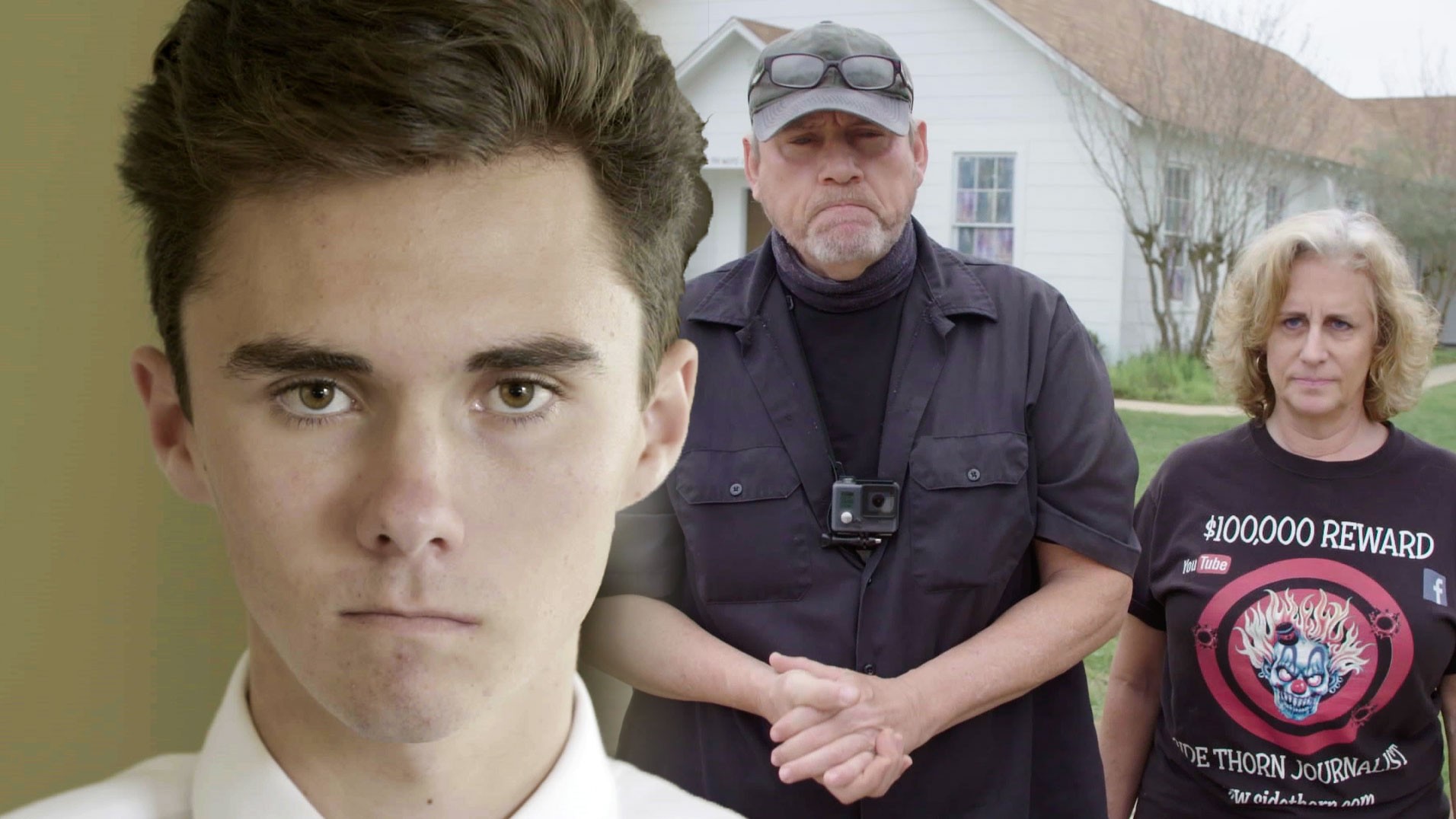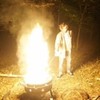Anthony Comello in court Monday. Photo by Seth Wenig/AP/Shutterstock. Social image includes a photo of an alleged college scam participant by Lisa O'Connor, Tomasso Boddi/AFP/Getty Images
In 1993, 30 years after the assassination of John F. Kennedy, the Washington Post published an article under the headline, "Murdered by the Mob?" The piece was written by George Robert Blakey, an American attorney and law professor famous for helping draft the Racketeer Influenced and Corrupt Organizations Act, better known as RICO, legislation that would eventually bring down many of the highest-ranking mobsters in the country. From 1977 to 1979, Blakey also served as the chief counsel and staff director of the House Select Committee on Assassinations, investigating the murders of JFK and Martin Luther King Jr. It remains, even now, way too easy to blow a relatively promising afternoon exploring circumstantial hypotheticals surrounding the case and bold-faced names like Fidel Castro and the CIA. But it's enough to say that Blakey believed the 35th president of the United States may have been murdered by the Mafia. He even co-authored a book about it.It's worth revisiting that episode as America veers deeper into a sort of Twilight Zone of mob activity. The ongoing saga began last week, when, police have said, a 24-year-old Staten Island construction worker named Anthony Comello shot and killed Francesco "Frank" Cali, the reputed boss of the Gambino crime family. The killing sent the public, and the media, into a complete frenzy, especially after details emerged suggesting this probably wasn't a typical mob hit. That was just the start: When Comello, having been arrested on the Jersey Shore, appeared in court on Monday, he appeared to flash a QAnon symbol on his palm, purportedly referencing the internet conspiracy theory that posits government officials are up to the worst things imaginable (i.e. pedophile rings). According to the New York Post, Comello also previously ran a secret, pro-Trump Instagram, and allegedly tried to engineer a citizen's arrest of NYC mayor Bill de Blasio.There is, however, no direct evidence as of yet subscribing a political motivation to Cali's slaying. Comello's lawyer, according to the AP, dismissed the "Q" symbol on his hand as rendering of "handcuffs." And accounts of what happened and why remain conflicting: Police have floated the notion that a possibly stoned Comello whacked Cali because the mob boss had demanded the young man stay away from one of his relatives, specifically a niece.Nonetheless, the scribbles on Comello's flesh served as a reminder that the Mafia—and, in this case, the people who find a way to associate themselves with it—has historically served as a template for some of America's most demented illusions.

"Often, when we use the word 'conspiracy,' we leave the Mafia out—which is really a strange thing, because when you think about what they're doing, it's conspiring in secret to do bad stuff," Joseph Uscinski, an associate professor of political science at the University of Miami and expert on conspiracy theories, told me over the phone. "I think part of the reason for that is we tend to see the things that organized crime does as not big enough. Generally what the Mafia tries to do is work underneath our bedrock rules, whereas, if you refer to the Illuminati, we're generally talking about people who are breaking our bedrock rules."Put another way: When the Mafia is involved in a larger conspiracy, we have an easier time believing what would otherwise be an absurd fantasy. The story of the mobster is the rags-to-riches story of the underdog. It's the perverted American dream: He is mysterious, sure, but he's viewed as calculated, and capable of almost anything. Whether or not Lucky Luciano, long considered a forefather of organized crime in the United States, assisted American Naval Intelligence in invading Sicily during World War II doesn't matter—we don't have to struggle too much to consider that it might be true. Likewise, for decades, Americans have mulled over the idea that Jimmy Hoffa, the infamous leader of the Teamsters who vanished in 1975 after being released from prison for jury tampering and attempted bribery and fraud, was whacked by the mob and buried underneath Giants stadium in Rutherford, New Jersey. (In the spring of 2010, when the old stadium was demolished, and the team moved to new refurbished facility next door, the legend went with it, too.)Obviously, add to all that the distinct folklore—coy nicknames, trademarked slayings ("leave the gun, take the cannolis"), verbal intimidation, nearly absurd physical extortion, and the secret ritual to become a "made man" (The Sopranos take was a candle, a blood pact, and the burning card of a saint)—and you've got plenty of fodder for modern, internet-bred nonsense."Much of what conspiracy theories are are to make sense of what powerful people do when we can't see," Uscinski told me. "One way to think about them is that the people who are usually the most attracted to them are those who don't like powerful institutions and seem to have a bias against them, to the point that they think they're up to evil."So when the American Mafia—itself a conspiracy, as almost every relevant federal indictment will remind you—appears to overlap with a broader, topical, or more ridiculous and outlandish conspiracy, as with Comello invoking QAnon, the mob is acting as a ripe source for projection. Theirs is a practical conspiracy; it's a diet one, or a rather subdued version. The elements we often harp on with mob stories—the emphasis on loyalty, familial bonds, backhand dealing, violence—reveal, as Jack Bratich, an associate professor of journalism and media studies at Rutgers and a scholar of conspiracy theories, put it, "the hopes and dreams (and nightmares) of US capitalism."Ultimately, "what connects our fascination with the mob and with conspiracies [in general] is a deep-seated desire to understand how power works in America," Bratich wrote to me in an email.
Advertisement
Advertisement

"Often, when we use the word 'conspiracy,' we leave the Mafia out—which is really a strange thing, because when you think about what they're doing, it's conspiring in secret to do bad stuff," Joseph Uscinski, an associate professor of political science at the University of Miami and expert on conspiracy theories, told me over the phone. "I think part of the reason for that is we tend to see the things that organized crime does as not big enough. Generally what the Mafia tries to do is work underneath our bedrock rules, whereas, if you refer to the Illuminati, we're generally talking about people who are breaking our bedrock rules."Put another way: When the Mafia is involved in a larger conspiracy, we have an easier time believing what would otherwise be an absurd fantasy. The story of the mobster is the rags-to-riches story of the underdog. It's the perverted American dream: He is mysterious, sure, but he's viewed as calculated, and capable of almost anything. Whether or not Lucky Luciano, long considered a forefather of organized crime in the United States, assisted American Naval Intelligence in invading Sicily during World War II doesn't matter—we don't have to struggle too much to consider that it might be true. Likewise, for decades, Americans have mulled over the idea that Jimmy Hoffa, the infamous leader of the Teamsters who vanished in 1975 after being released from prison for jury tampering and attempted bribery and fraud, was whacked by the mob and buried underneath Giants stadium in Rutherford, New Jersey. (In the spring of 2010, when the old stadium was demolished, and the team moved to new refurbished facility next door, the legend went with it, too.)
Advertisement
Advertisement
Which, well, Americans continue to have a lot of trouble with."In the US, civic education and conventional wisdom tells us that America is exempt from crude forms of power (rackets, networks of intimidation, gang control of resources, even violence like assassinations)," Bratich added. "Americans have a built-in suspicion of power (see, for instance, the American Revolution). Where are the stories and narratives to make sense of how power works in a more realistic sense? We often turn to spectacular, even lurid accounts, especially in popular culture."In other words, Americans don't necessarily possess a healthy, or all that accurate, way to observe and process abuses of authority. Yet since the 2016 election, we appear to be caged in on all sides by just that—the student loan crisis, corporate-level scams and other grifts, breaches of data and foreign cyber warfare, not to mention crimes in the White House and its environs. It's not shocking, Bratich argued, that this Comello QAnon situation has gained such a fervent following amid the aftermath of the college cheating scam."People are seeing that rackets are the norm," he told me. "The mob version seems almost like a retro version—surprising because it's antiquated."Sign up for our newsletter to get the best of VICE delivered to your inbox daily.Follow Alex Norcia on Twitter.
